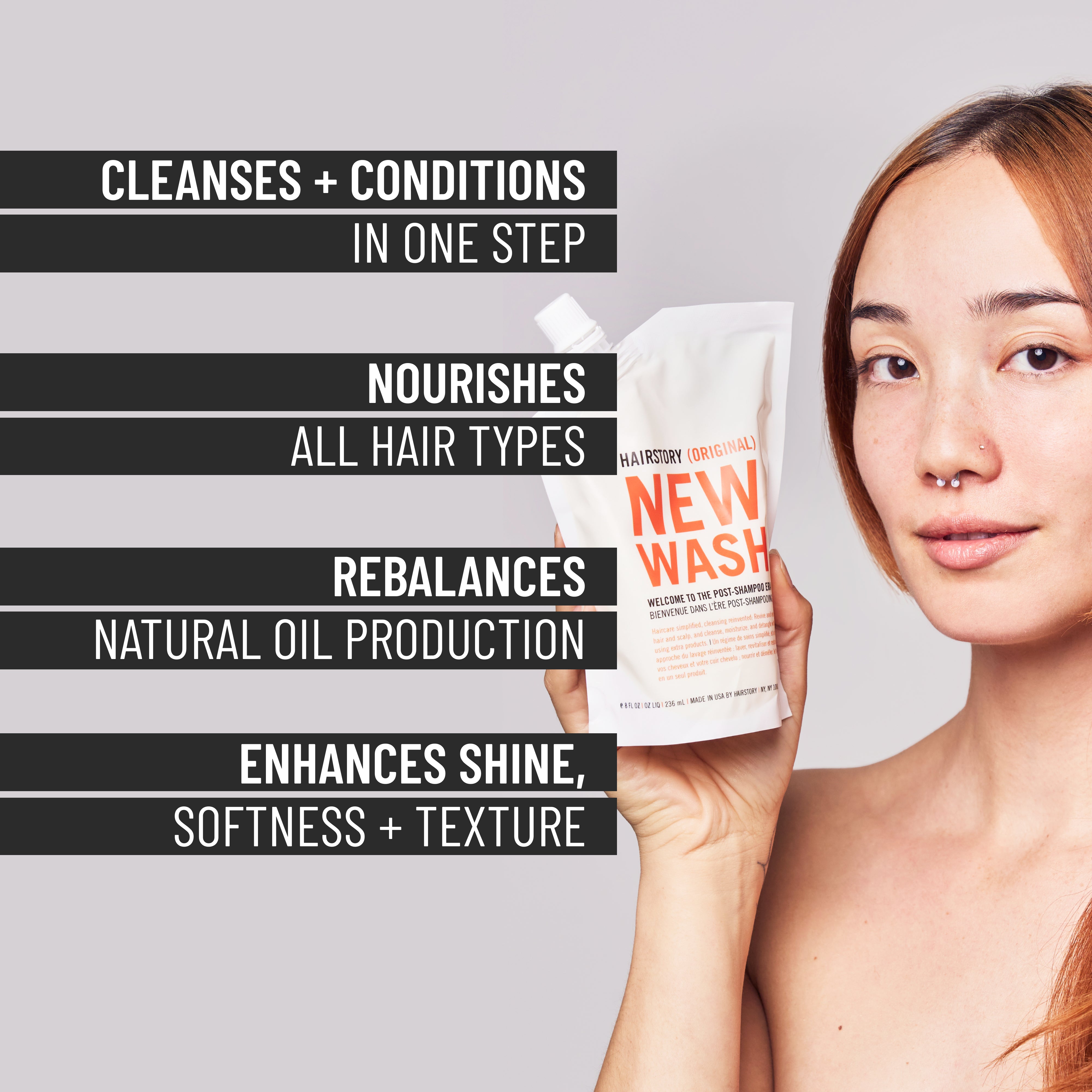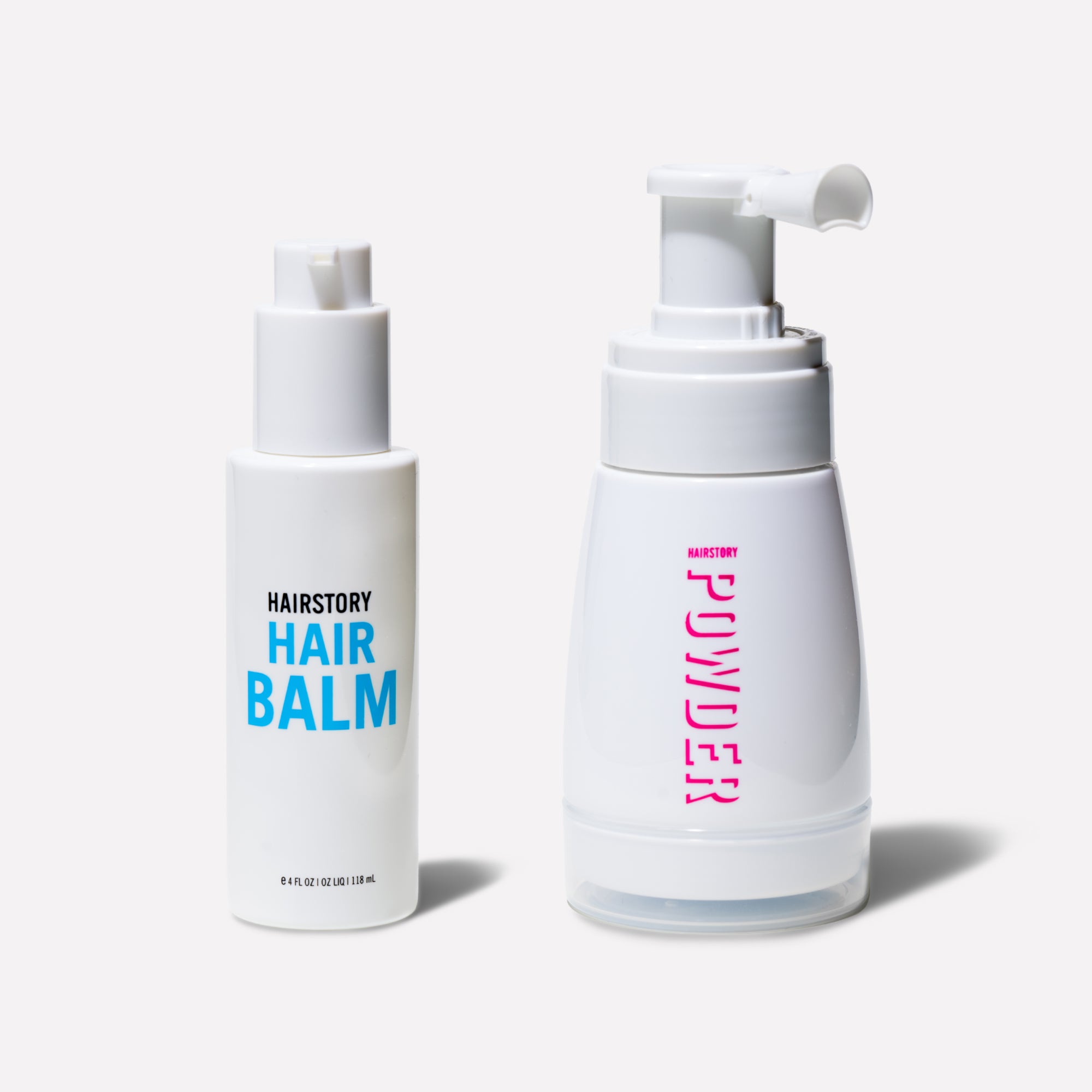When you search for “natural” shampoo, you’re searching for healthier alternatives, right? That’s a worthy intention, but there’s a catch: 100% natural shampoo doesn’t exist unless you’re whipping it up in your kitchen.
New Wash ingredients: Peppermint, Aloe Vera, Sunflower, Jojoba, and Evening Primrose Oils
By law (in the US), a product can be labeled as natural even if it contains as little as 1 percent naturally-sourced, plant-based or mineral ingredients, and up to 30 percent synthetic ingredients. And, the term describes such a broad array of substances that it’s a fairly useless guide for making healthful choices: substances like petroleum, arsenic, mercury, and poisonous mushrooms are technically natural but potentially harmful.
Theoretically, a product labeled as “synthetic-free” contains no man-made ingredients to speak of and contains 100% naturally-occurring elements or compounds. The term “plant-based” might be a little more flexible but generally indicates that the product is made with botanical ingredients. Both terms are unregulated.
Senior Chemist Michael Slayton says, “I think it is somewhat inaccurate to refer to a ‘synthetic-free’ product as containing no man-made ingredients as some of the ingredients invariably go through a ‘man-made’ process.” Is a naturally-occurring ingredient better for you than an equivalent made in a lab? Mr. Slayton doesn’t think so: “I do not believe a ‘naturally-occurring’ ingredient is better for you than one made in the lab as there is greater consistency in materials made in the lab as opposed to those from nature.”
Remember that ingredients are listed from highest percentage to lowest, so purists generally aim to pick a product where synthetic ingredients are mainly at the bottom of the list.
Additionally, most products require some level of preservatives that are often synthetic; 100% natural products will have a significantly shorter shelf life.
Organic? That’s a whole other bottle of bubbles. Learn more about the differences between natural and organic here.
Don’t judge an ingredient by its name
The INCI (International Nomenclature of Cosmetic Ingredients) requires that names appear on product labels in Latin. That means that you may not recognize names for familiar things – Simmondsia Chinensis is how Jojoba is listed; Mentha Piperita is Peppermint. Also, names that may sound ominously chemical may be ordinary things; sodium cocoate is processed coconut oil; sodium chloride is merely salt, citric acid is found in lemons and other citrus fruits. Remember that ingredients are listed from highest percentage to lowest, so purists generally aim to pick a product where synthetic ingredients are mainly at the bottom of the list.
Natural Products Certification
The good news: The NPA (Natural Products Association) serves to independently certify personal care and home care products in the United States. The association requires that certified products must: include at least 95 percent ingredients from natural sources, excluding water; avoid ingredients with health risks; don’t use animal testing; include biodegradable or recycled material in the packaging; list all ingredients on the package label, and contain 100 percent natural fragrances and colorants. NPA has certified more than 1,200 products and ingredients since 2008. Look for their seal on packaging.
Is New Wash natural?
Yes, and no. It’s true that our hero product New Wash, a detergent-free hair cleanser, wouldn’t be certified by the NPA, because we don’t think a formula that qualifies would be as effective. Yes, an abundance of ingredients found in nature are the core of the formula, some certified as organic. Avoiding unhealthful ingredients was a part of our company vision. It was never tested on animals. All ingredients are listed on the box, and all fragrance ingredients (also listed) are natural. No colorants are used.
But, some ingredients we included – often derived from plants – are refined in a laboratory. Stearamidopropyl Dimethylamine, for example, is a name that sounds scary to some people. But it is a substitute for the conditioning properties normally provided by silicone – which we elected to avoid – and it is derived from vegetable oils. Gluconolactone is a moisturizer, a UV protectant and free-radical scavenger made by removing the water from gluconic acid, a substance naturally produced by mammals to metabolize carbohydrates. It can also be produced from corn. You get the idea: many ingredients that aren’t technically natural have natural origins.
* * *















































